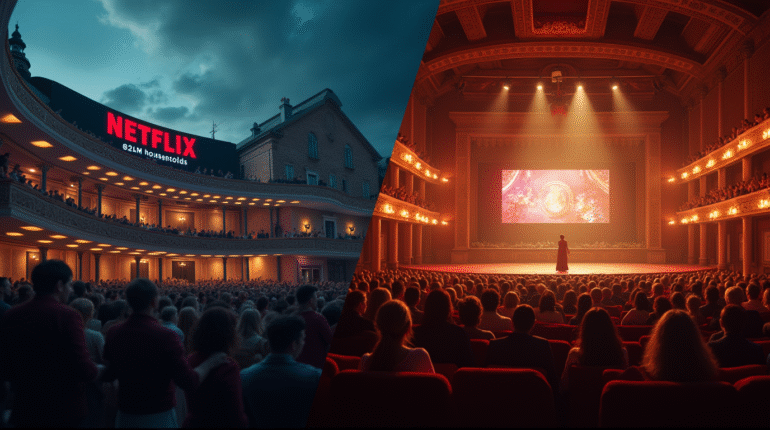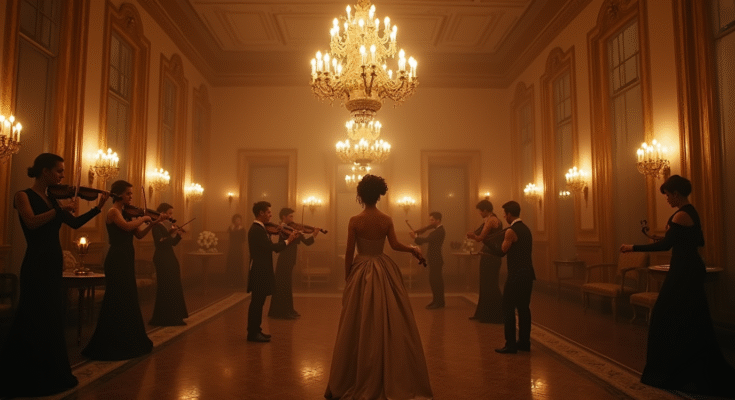The meteoric rise of Netflix’s Bridgerton has transformed the landscape of television streaming by making period dramas a mainstay within the repertoire. Since its debut in December 2020, the Shonda Rhimes-produced series based on Julia Quinn’s novels has engrossed viewers around the world with lavish aesthetics from the Regency era, diversity in casting, and intense romantic storylines. Not only has it put the Bridgerton franchise at the very peak of Netflix offerings, but also revived interest in period dramas to an extent that now defines and programs strategies for streamers. This article will utilize viewing data along with upcoming releases to probe how Bridgerton popularized historical dramas and reflects their staying power with contemporary audiences.

Bridgerton viewership numbers tell us about the cultural and commercial impact of the show. In its first 28 days, 82 million households watched Season 1 worldwide; at that time, it was Netflix’s biggest series launch, even surpassing The Witcher’s 76 million. Reported by Variety, this figure far exceeded Netflix’s initial projection of 63 million households; it shows how unexpectedly appealing the show became throughout the world. By 2024, Season 3 of Bridgerton reached 91.9 million views within its first 91 days, placing it as the #10 biggest English-language series ever on Netflix, according to Variety. The first four episodes in May 2024 brought in 45.1 million views in their debut weekend, which is far larger than any previous weekend in the series’ history
The Bridgerton effect goes beyond its own storyline, renewing viewers’ interest in period dramas on all streaming services. Data from Netflix for the first half of 2024 confirms that historical dramas like Bridgerton and its spin-off Queen Charlotte: A Bridgerton Story (24 million views) are leading the charts on viewership; the latter is one of the best-performing titles. The reasons for its appeal lie in Bridgerton’s approach to the genre with a more modern sensibility, an amalgamation of historical settings with present-day attitudes, including diversity in casting and pop music performed by string quartets. It has found resonance with younger viewers. Parrot Analytics observed that it is mainly due to comedic and satirical tones that Bridgerton is relatable to today’s audiences.

The influence of Bridgerton is seen in its long-term engagement ability. It is noted by Deadline that Netflix shifted to a 91-day viewership measurement window, therefore allowing shows like Bridgerton to showcase staying power; Season 1 sits at number four on the all-time English-language series list with over 2 billion hours viewed. The success of the franchise is further enhanced by its “virtuous cycle,” in which new releases greatly increase older seasons’ viewership. For example, as noted by Deadline, the release of Queen Charlotte in 2023 brought back Seasons 1 and 2 of Bridgerton into Netflix’s Top 10 with over 130 million hours viewed each. Cyclical engagement seen in other seasonal franchises like Hospital Playlist on Tving maximizes user retention as well as platform “stay time.”
Netflix will keep making period dramas. It will use Bridgerton’s success. Season 4 of Bridgerton is already approved for production, and it may come in 2025, though more likely in 2026 because of the schedules of other productions, as reported by What’s on Netflix. The show will continue to detail the love lives of the Bridgerton brothers and sisters, with Benedict or Eloise one of them. Netflix has also removed the limited series tag from Queen Charlotte, which gives rise to more rumors about a second season or more spin-offs, as reported by What’s on Netflix. Other period dramas set for 2025 releases include Bogota: City of the Lost, which is a Korean crime thriller set in the 1970s, and Maria, which tells the life story of opera singer Maria Callas.
The wider streaming scene shows Bridgerton’s impact, with rivals like Apple TV+ joining the game with Carême, an eight-part French period drama about a chef-turned-spy which has drawn comparisons to Bridgerton for its Regency-era setting and steamy narrative. Viewer reactions on social media are described by HELLO! sees Carême as a mix of Bridgerton, The Bear, and The Gilded Age – an indication of the genre’s cross-platform appeal. However, Netflix’s prowess is evident as 10 out of 15 top TV shows in the 2024-2025 season are Netflix originals per Nielsen ratings reported by ScreenRant. Such success comes from brand reliability that Netflix has translated into the ability to produce high-budget accessible content that would appeal to global audiences, an offering not available from niche offerings on platforms like
Despite its triumphs, Netflix’s viewership data has faced scrutiny. The company’s decision to report hours viewed rather than “views” (hours divided by runtime) disadvantages shorter content, as noted by Deadline, though Bridgerton’s lengthy episodes benefit from this metric. Critics, including FX’s John Landgraf, have argued that Netflix’s self-reported numbers may inflate popularity, with You’s reported 40 million household views equating to roughly 8 million average



